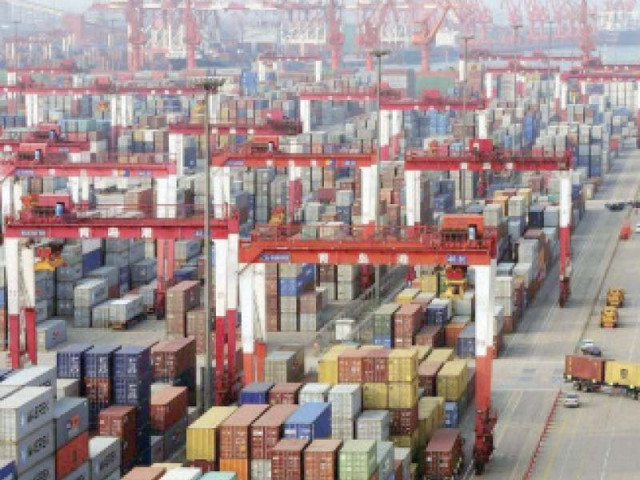Pakistan's current account turns into surplus
Surplus comes in wake of decline in country’s exports and imports

Current account deficit narrowed down 73.6% to $3.29 billion in the first 11 months of FY20 compared to $12.45 billion in the same period of last year. PHOTO: REUTERS
“The surplus was primarily achieved after Pakistan’s export earnings dropped to a 13-year low at $1.27 billion and import payments fell to a 10-year low at $2.8 billion in May,” BMA Capital Executive Director Saad Hashmi said while talking to The Express Tribune.
The slowdown in imports and exports clearly indicated a significant drop in economic activities in response to the coronavirus pandemic, he said.
Besides, improvement in the receipt of workers’ remittances, decline in trade deficit of services and increase in other current transfers (remittances received through currency dealers) helped to turn the current account balance into a surplus from deficit.
Pakistan achieved current account surplus of $13 million in May compared to a deficit of $530 million in the previous month of April and $1 billion in May 2019, the State Bank of Pakistan (SBP) reported on Wednesday.
With this, the current account deficit narrowed 73.6% to $3.29 billion in the first 11 months (July-May) of outgoing fiscal year 2019-20 compared to $12.45 billion in the same period of last year.
“The significant drop in exports (to over a decade low) is indicating a massive hit to local economic activities amid the Covid-19 pandemic,” he said. “The government should immediately set its focus on increasing exports by finding new markets, introducing value-added products in export markets and through policy initiatives,” he added.
He said exports may bounce back quickly, even next month, if the government put extra efforts as the world gradually resumed economic activities. Major economies (Pakistan’s trade partners) like European nations, the US and China have reopened in recent days and weeks.
Pakistan still exports basic commodities rather than value-added and branded products. “The demand for basic commodities always remains intact,” he stated.
The world is talking about the outbreak of the second wave of Covid-19. It, however, seemed impossible the world would re-impose lockdowns to contain the Covid-19 going forward. Countries would rather make sure that people adopt precautionary measures to deal with the situation despite shutting down their economies again.
“There is increased awareness among people globally, including Pakistan, for the adoption of precautionary measures and SOPs (standard operating procedures) to stay with the infection till its successful vaccine is launched in a period of 9-10 months,” he said.
Cumulatively in the 11 months, the central bank reported, the import of goods shrank almost 19% to $38.88 billion compared to $47. 83 billion in the same period of the last year.
Unfortunately, the export of goods decreased by 7% to $20.94 billion compared to $22.46 billion.
Luckily, the workers’ remittances improved 3% to $20.65 billion compared to $20.10 billion.
Hashmi said economic managers need to keep a vigilant eye upon workers’ remittance as well as they may also fall following massive layoffs in overseas countries. “Pakistanis lost their jobs in the foreign markets are arriving back to their homeland,” he said.
“Despite the surplus, there was a sharp deterioration in the overall balance of payments, due to a $3.5 billion month-on-month decline in the financial account,” JS Research said in a commentary.
The deterioration was expected given the drop in foreign exchange reserves in the recent weeks post $1.4 billion inflow from the International Monetary Fund’s (IMF) emergency loan in April. “During May-2020, debt repayments stood at $1.8 billion particularly in the absence of any material fresh debt inflows.”
Published in The Express Tribune, June 25th, 2020.
Like Business on Facebook, follow @TribuneBiz on Twitter to stay informed and join in the conversation.


















COMMENTS
Comments are moderated and generally will be posted if they are on-topic and not abusive.
For more information, please see our Comments FAQ